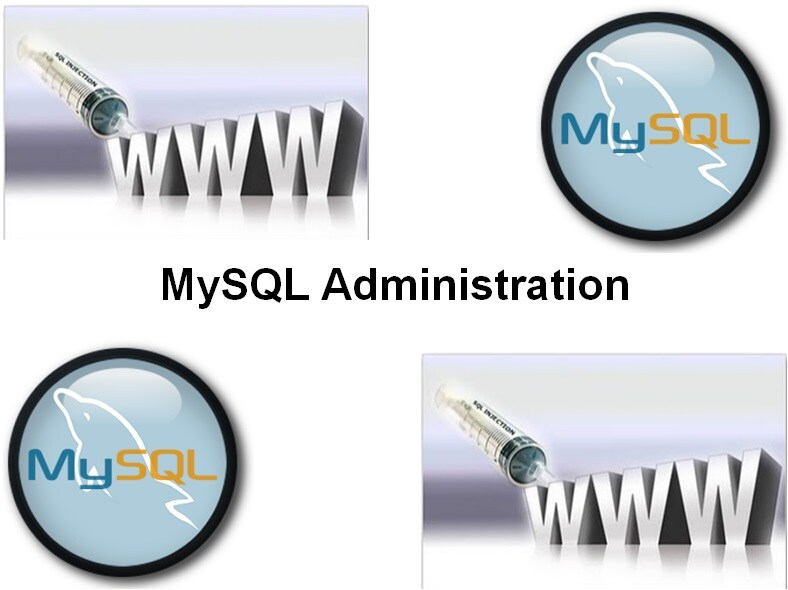-
Learning by doing
-
Trainers with practical experience
-
Classroom training
-
Detailed course material
-
Clear content description
-
Tailormade content possible
-
Training that proceeds
-
Small groups
In the course MySQL Administration participants learn to configure and manage a MySQL database. MySQL is an open source relational database management system (RDBMS) from Oracle. Originally MySQL was mainly used for web applications with PHP, but other programming languages such as Java are also possible. The course uses the latest version of the MySQL database and the MySQL Workbench.
The MySQL Administration course starts with a discussion of the mysqld daemon that runs on the server and a series of client programs such as mysql and mysqldump that can interact with the server. Also the SHOW and DESCRIBE commands and MySQL server variables are covered.
Next installing, starting up and shutting down a MySQL server is covered. Configuring MySQL components and the various storage engines is also treated.
Attention is then paid to the internal architecture of the MySQL server, in which Communication Protocols and Storage Engine Tiers are reviewed. And the data types in MySQL are covered.
The course MySQL Administration also discusses storage and locking. The difference between table-level locking and row-level locking is explained. InnoDB is the only storage engine that supports row-level locking and thus ACID transactions.
Attention is also paid to the maintenance of MySQL server including backup, recovery and optimization. Export of data with mysqldump and import with mysqlimport state is treated.
Then it is time for the security of a MySQL installation. The assignment and maintenance of GRANTS and PRIVILEGES as well as the management of users and access rights are discussed. Attention is also paid to operating, file system and network security.
Finally optimization of a MySQL database is on the agenda. This includes explain to analyze Queries, the use of indexes, the Query Cache as well as the use of multiple servers and replication.
The course MySQL Database Administration is designed for database Administrators who need to administer, monitor and support MySQL databases and servers.
To join the course MySQL Administration knowledge of the SQL query language and databases is needed.
The subject matter is treated on the basis of presentation slides. Demos are used to clarify the theory and exercises are used to bring the theory into practice. The course material is in English. This course fulfills the requirements for the Oracle MySQL Database Administrator certification. The course times are from 9.30 up and to 16.30.
Participants receive an official certificate MySQL Administration after successful completion of the course.

Module 1 : Intro MySQL |
Module 2 : Configuring MySQL |
Module 3 : MySQL Architecture |
|
Client Program Limitations mysql en mysqld MySQL Admin What is Metadata? mysqlshow Utility SHOW Command DESCRIBE Command Information_Schema Database MySQL Server Options MySQL Server Variables MySQL Status Variables MySQL Distributions SQL Parser Client/Server Overview |
Installing on Windows Installing on Linux Starting and Stopping Log and Status Files The Default SQL Mode Time Zone Tables Some Security Issues MySQL Error Messages The SHOW Statement SQL Modes The PERROR Utility The Log The Error Log The Slow Query Log |
Communication Protocols Storage Engine Tiers Disk Space and Memory Usage Table Properties Obtaining Table Metadata Column Attributes Bit and Numeric Data Types Character String Data Types Binary String Data Types Enum and Set Data Types Temporal Data Types Auto_Increment Missing or Invalid Data Values Performance Issues Character sets |
Module 4 : Storage and Locking |
Module 5 : Table Maintenance |
Module 6 : Backup and Recovery |
| Locking Concepts Explicit Table Locking Advisory Locking Preventing Locking Problems Innodb Status The MYISAM Engine Locking with MYISAM Tables The Merge Engine Other Engines: Archive, Memory, Federated Blackhole, NDBCluster |
Transactions Referential Integrity Physical Characteristics of Innodb Tables Tablespace Configuration Log File and Buffer Configuration Table Maintenance Operations Check, Repair, Analyze, Optimize MySQL Check MYISAMCHK Repairing Innodb Tables Enabling MYISAM AutoRepair |
Backup and Recovery Strategy Disaster Recovery Plan Backup and Recovery Plan Binary Backups of MYISAM Tables Binary Backups of Innodb Tables Recovery Import and Export Operations Exporting Using SQL Importing Using SQL Exporting using mysqldump Importing using mysqlimport |
Module 7 : Security |
Module 8 : Stored Procedures |
Module 9 : Optimization |
| User Accounts Creating Users Changing Passwords Dropping Users Granting Privileges Revoking Privileges Resource Limits Show Grants Command Operating System Security File System Security Network Security |
User Variables Prepared Statements Types of Stored Routines Benefits of Stored Routines Stored Routines Features Stored Routine Maintenance Stored Routine Privileges Stored Routine Execution Security DML Triggers The Create Trigger Statement Managing Triggers |
Optimization Process Using Explain to Analyze Queries Indexes for Performance Creating and Dropping Indexes Indexing and Joins Normalisation General Table Optimizations Measuring Server Load Server Parameters Query Optimizer Performance The Query Cache |
Module 10 : Environment Optimization |
Module 11 : Scaling MYSQL |
Module 12 : MySQL Workbench |
| Choosing the Platform Hardware Configurations Disk Issues on Linux Symbolic Links Optimizing the Operating System Event Scheduler Configuration Creating and Altering Events Event scheduler monitoring Events and privileges |
Partitioned tables Concepts Range partitioning Hash partitioning Key partitioning List partitioning Composite Partitioning Maintenance of partitioned tables Using Multiple Servers Replication |
Installation Connecting Server Information Service Control User Administration Privileges Health Backup and Restore Catalogs |
